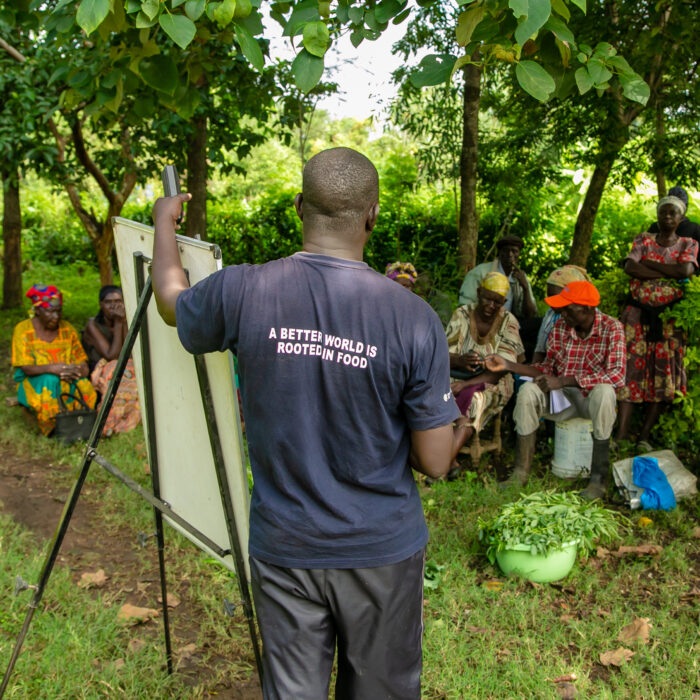This is how resilience is built – locally-led solutions to root causes.
DIG’s model, which intentionally rejects long-term dependency on aid, is a compelling blueprint for what’s next. In the places we work, communities that have long faced marginalization are building systems of self-reliance that do more than just sustain life, they build a future.
By equipping people with the tools and knowledge to grow food and contribute to their local food systems, they gain the power to improve not just their own nutrition, income, and health, but the well-being of entire communities.
When DIG enters a new region, we do so through trusted local partners: hospitals, clinics, schools, orphanages, and grassroots groups. We begin by listening. Before a single seed is planted, we learn from the land, the people, and the cultural foodways that have sustained them for generations.
Guided by the principles of agroecology, we co-create programs tailored to their environment and nutritional needs. Farmers select crops that are locally relevant, climate-resilient, and nutritionally dense. When they graduate from our intensive training, each one goes on to train four to five more community members, multiplying the impact and deepening local food systems.
In the face of this global aid freefall, the question becomes: What is the new normal? And perhaps more important, who will survive it?
DIG has always worked in the margins, in communities the world too often forgets: People living with HIV. Young mothers. The elderly. Survivors of gender-based violence. These are the people who suffer most when supply chains collapse and international funding disappears.
And yet, these are the same people showing the world what real resilience looks like.
During the COVID-19 pandemic, when borders closed and supply chains failed, DIG farmers fed their communities. Their gardens weren’t just sources of food—they were sources of power. Each farmer passed on what they knew. The impact grew exponentially.
Now, as USAID cuts wipe out lifesaving programs, those same farmers are stepping up again.
In Homa Bay County, Kenya—a region deeply affected by HIV, tuberculosis, and child malnutrition—nearly 1,200 health workers have been laid off. Clinics are out of RUTF. The safety net has collapsed.
But where government systems unravel, DIG’s community-led programs are holding strong, with gardens designed to thrive under pressure.
By training local facilitators, honoring indigenous knowledge, and investing in long-term solutions, we’ve built a system that adapts in crisis, it doesn’t collapse.
One mother in Kenya said it best: “I want to be like Monica [DIG’s Lead Mentor Mother]. I want to empower women like me to help them improve their families’ and children’s lives. Every child deserves to live and see their future.” – Lily, Kenya (Priority Household Program)
So when people ask what the “new normal” looks like, we tell them: it’s not new. It’s what we’ve always been doing.
We’re building systems that last.
We’re not just feeding people today. We’re cultivating the knowledge, tools, and community strength they need to feed themselves and their neighbors, tomorrow.

